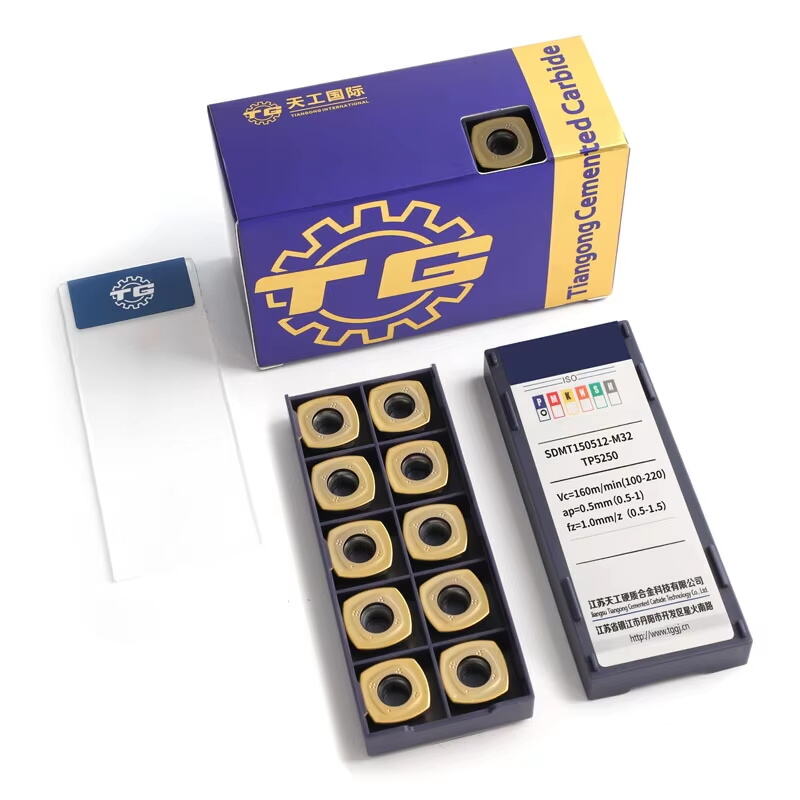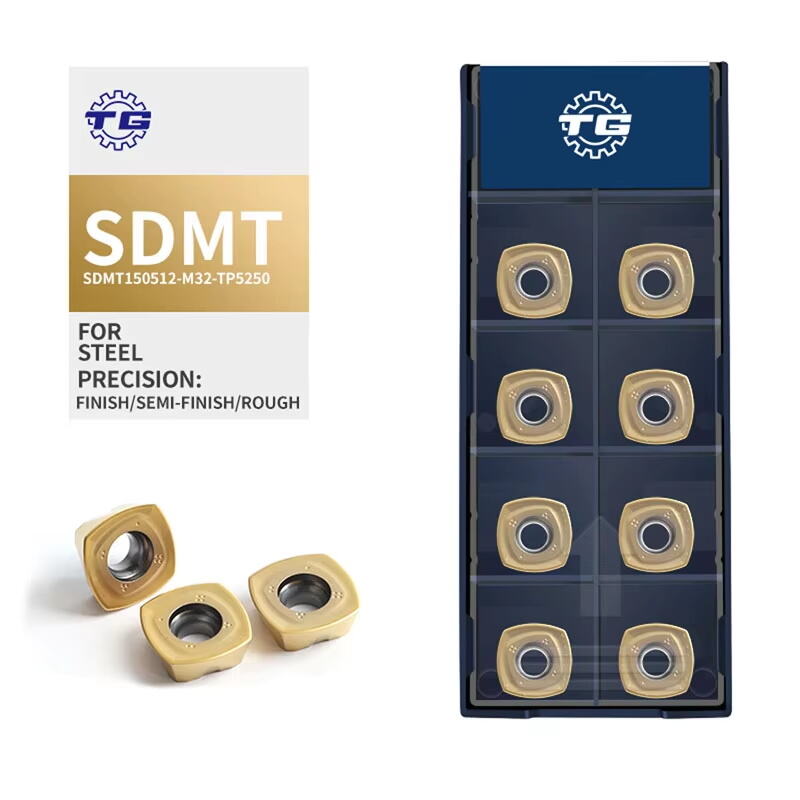The Evolution of Industrial Cutting Tools: From Steel to Advanced Materials
The manufacturing industry has witnessed a remarkable transformation in cutting tool materials over the past century. While traditional tool steels once dominated the market, cemented carbide has emerged as the superior choice for modern industrial applications. This revolutionary material combines the hardness of tungsten carbide particles with the toughness of a metallic binder, creating a composite that outperforms conventional steel in numerous ways.
The shift towards cemented carbide represents more than just a material upgrade - it's a complete paradigm shift in how we approach metal cutting and tooling applications. As industries demand higher precision, longer tool life, and increased productivity, cemented carbide continues to prove its worth as the material of choice for cutting tools and wear-resistant components.
Superior Performance Characteristics of Cemented Carbide
Exceptional Hardness and Wear Resistance
Cemented carbide exhibits remarkable hardness values that significantly exceed those of traditional tool steels. The tungsten carbide particles provide exceptional resistance to abrasion and wear, maintaining sharp cutting edges even under extreme conditions. This superior hardness translates to longer tool life and consistent performance throughout extended manufacturing runs.
The material's unique composition allows it to maintain its hardness at elevated temperatures, unlike tool steels that can lose their cutting efficiency when heated. This thermal stability makes cemented carbide particularly valuable in high-speed machining operations where cutting temperatures can reach extreme levels.
Enhanced Thermal Conductivity and Stability
One of the most significant advantages of cemented carbide is its superior thermal conductivity. This property allows heat to dissipate more effectively during cutting operations, reducing the risk of thermal damage to both the tool and the workpiece. The improved heat management leads to better surface finishes and more precise dimensional control in machined parts.
The thermal stability of cemented carbide also means less thermal expansion during operation, resulting in more accurate cuts and better overall process control. This characteristic is particularly valuable in precision engineering applications where maintaining tight tolerances is crucial.
Economic Benefits and Production Efficiency
Increased Productivity Through Higher Cutting Speeds
Cemented carbide tools can operate at significantly higher cutting speeds compared to traditional tool steels. This capability translates directly into increased production rates and improved efficiency on the shop floor. The ability to maintain sharp cutting edges for longer periods means fewer tool changes and reduced downtime.
The enhanced performance characteristics of cemented carbide allow manufacturers to push their machining parameters to higher levels, optimizing their production processes while maintaining excellent part quality. This increased efficiency directly impacts the bottom line through improved productivity and reduced operational costs.
Long-Term Cost Advantages
While the initial investment in cemented carbide tools may be higher than traditional tool steels, the long-term economic benefits far outweigh the upfront costs. The extended tool life and reduced frequency of replacements result in significant savings over time. Additionally, the higher productivity rates achievable with cemented carbide tools contribute to faster return on investment.
The reduction in machine downtime for tool changes and the consistency in part quality also lead to lower overall production costs. These factors combine to make cemented carbide a more economical choice for modern manufacturing operations.

Environmental and Sustainability Considerations
Reduced Resource Consumption
The durability of cemented carbide tools contributes to sustainability efforts by reducing the frequency of tool replacement. This longevity means fewer resources are consumed in tool production and less waste is generated over time. The material's ability to maintain consistent performance also results in fewer rejected parts and reduced material waste.
The higher efficiency of cemented carbide tools also translates to lower energy consumption per part produced, contributing to reduced environmental impact in manufacturing operations. This aspect is becoming increasingly important as industries focus on sustainable manufacturing practices.
Recycling and Material Recovery
Cemented carbide offers excellent recyclability, with established processes for recovering and reusing the valuable tungsten carbide content. This recyclability helps conserve natural resources and reduces the environmental impact of tool production. The recycling process is well-developed and economically viable, making it an attractive option for sustainable manufacturing.
The ability to recycle cemented carbide tools effectively creates a circular economy within the tooling industry, reducing dependence on raw material extraction and minimizing waste. This aspect adds another layer of environmental benefit to choosing cemented carbide over traditional tool steels.
Applications and Industry Impact
Diverse Manufacturing Applications
Cemented carbide has found widespread adoption across various industries, from automotive and aerospace to medical device manufacturing. Its versatility makes it suitable for everything from heavy roughing operations to precision finishing work. The material's properties allow it to excel in both interrupted cutting and continuous machining operations.
The adaptability of cemented carbide has led to its use in specialized applications where traditional tool steels simply cannot perform adequately. This includes high-temperature applications, aggressive cutting conditions, and situations requiring exceptional wear resistance.
Future Trends and Developments
The development of cemented carbide technology continues to evolve, with ongoing research into new compositions and coating technologies. These advances promise even better performance characteristics and broader applications in the future. The industry is seeing innovations in nano-grain carbides and novel binder materials that could further extend the capabilities of these tools.
As manufacturing technologies advance, cemented carbide is expected to play an increasingly important role in enabling new manufacturing processes and improving existing ones. The material's continuous evolution ensures its position as a crucial component in the future of manufacturing.
Frequently Asked Questions
What makes cemented carbide more wear-resistant than tool steel?
Cemented carbide's superior wear resistance comes from its unique composition of extremely hard tungsten carbide particles held together by a tough metallic binder. This structure provides much higher hardness values than tool steel while maintaining adequate toughness for cutting applications.
How does the cost of cemented carbide compare to traditional tool steels?
While cemented carbide tools typically have a higher initial cost than tool steel, they often prove more economical in the long run due to their longer service life, higher productivity rates, and reduced downtime for tool changes. The total cost of ownership is generally lower with cemented carbide tools.
Can cemented carbide tools be reground and reused?
Yes, cemented carbide tools can be reground multiple times, though this requires specialized equipment and expertise. The ability to regrind these tools extends their useful life and contributes to their cost-effectiveness in manufacturing operations.


